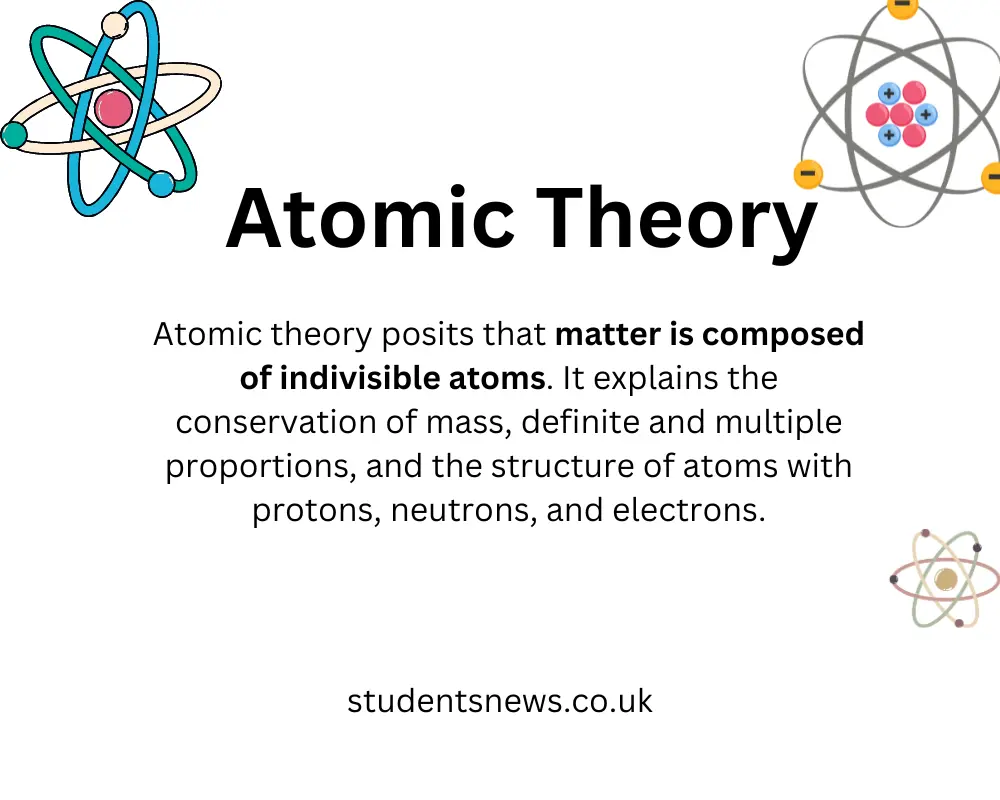Marie Curie, a name synonymous with groundbreaking scientific discoveries, left an indelible mark on the field of physics and chemistry during the late 19th and early 20th centuries. While she did not formulate a comprehensive atomic theory, her revolutionary work on radioactivity laid the foundation for significant advancements in our understanding of atomic and subatomic particles. In this blog post, we delve into the life and contributions of Marie Curie, exploring how her tireless efforts shaped the trajectory of modern atomic theory.
Early Life and Education
Born Maria Skłodowska in Warsaw, Poland, in 1867, Marie Curie’s passion for science was evident from an early age. Despite facing gender-based discrimination that limited educational opportunities for women at the time, she pursued higher education in France, where she met and later married Pierre Curie, a fellow scientist. Together, they embarked on a scientific journey that would revolutionize our understanding of the atomic world.
Discovery of Radioactive Elements
Marie Curie’s most notable contributions began with her investigation of uranium and thorium compounds. In 1898, she discovered the radioactive elements polonium and radium, ushering in a new era of scientific inquiry. These groundbreaking discoveries challenged existing scientific paradigms and opened the door to the exploration of the internal structure of atoms.
Understanding Radioactivity
Marie Curie’s meticulous experimentation revealed that certain elements underwent spontaneous decay, emitting radiation in the process. This observation was a pivotal moment in the history of atomic theory. It paved the way for future scientists to investigate the nature of radioactivity and explore the intricate details of atomic particles.
Impact on Atomic Theory
While Marie Curie did not formulate a comprehensive atomic theory herself, her work provided crucial insights that influenced the development of the atomic model. The understanding that atoms could undergo transformations and emit radiation challenged the prevailing notion of atoms as immutable, indivisible entities.
Marie Curie’s observations inspired subsequent scientists, such as Ernest Rutherford and Niels Bohr, to further unravel the mysteries of the atom. Rutherford’s experiments, using alpha particles and gold foil, led to the proposal of a nuclear model of the atom, with a tiny, dense nucleus at its center. Bohr expanded on this model, introducing the idea of quantized energy levels within the atom.
Legacy and Recognition
Marie Curie’s contributions to science did not go unnoticed. In 1903, she became the first woman to win a Nobel Prize, sharing the Physics Prize with her husband Pierre and Henri Becquerel for their work on radioactivity. In 1911, she received a second Nobel Prize, this time in Chemistry, for her discovery of radium and polonium. Marie Curie’s achievements transcended gender barriers and paved the way for future generations of women in science.
Challenges and Sacrifices
The pursuit of scientific knowledge came at great personal cost for Marie Curie. The radioactive materials she worked with, including radium, took a toll on her health. Despite the risks, her dedication to scientific inquiry remained unwavering. Tragically, Marie Curie died in 1934 due to complications related to her prolonged exposure to radiation. Her sacrifice underscores the challenges faced by early pioneers in the field of atomic research.
Conclusion
Marie Curie’s legacy extends far beyond the confines of her lifetime. Her groundbreaking work on radioactivity laid the foundation for the development of modern atomic theory, influencing subsequent generations of scientists. While she may not have formulated a complete atomic theory herself, her discoveries opened doors to new realms of scientific exploration. Marie Curie’s life serves as an inspiration, reminding us of the transformative power of curiosity and perseverance in the pursuit of knowledge. As we continue to unravel the mysteries of the atomic world, we owe a debt of gratitude to this trailblazing scientist whose legacy endures in the fabric of scientific history.



[…] The 19th century witnessed a renaissance in atomic thought with the work of John Dalton. Dalton’s atomic theory, formulated in the early 1800s, proposed that elements were composed of indivisible atoms. Each element had its unique atoms, and compounds formed through the combination of these atoms in fixed ratios. Similarly Marie Curie also contributed to the atomic theory. […]